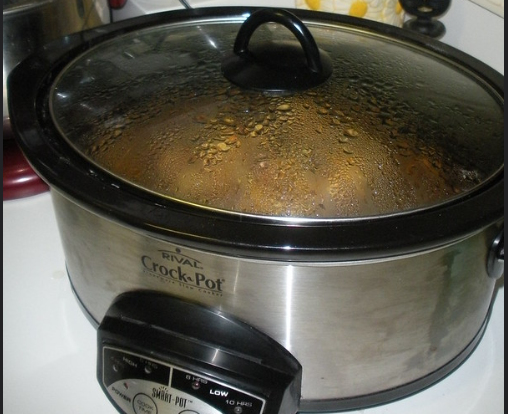The feeling you get when you step into a new car, even when it’s technically used and doesn’t have “the new car smell”, is exhilarating. Suddenly, your old car seems, well, old. Don’t get caught up in the emotion of that newness, however. You don’t want the excitement of a new car to be replaced by the depression of defaulting on your car loan. Here’s how to nip that problem in the bud and determine a budget before you even step foot on a car lot.
The 20 Percent Car Buying Absolute Maximum Rule

Salesmen want to sell you a car that they think you can afford. Unfortunately, it’s not always what you can actually afford. Go into your new car purchase with a goal of spending no more than 20 percent of your monthly household income. What does this do? It keeps you from burdening yourself with too much debt and financial responsibility.
Of course, the 20 percent rule is a guideline. You might be able to afford less, depending on your other expenses. Just don’t forget that there’s more to the cost of the car than just the loan payment. That 20 percent should also include gas, insurance, and maintenance.
Don’t Forget Gasoline in Your Car Buying Plans
Gasoline costs are hard to forget since you probably fill up your tank every week or every other week if you drive something super-efficient (or, you just don’t drive much). The problem is it’s sometimes difficult to get accustomed to a new vehicle’s actual mileage. You know what your current car gets. You know what the manufacturer claims you’ll get on the new car, but you don’t actually know what you’ll get in “real world driving.” Sometimes those estimates don’t pan out.
Assume that the mileage rating is low-balled. Round down to the nearest “5” just to be on the safe side. If a car claims 27 MPG, assume it’s 25. Maybe it really does get 27, but it’s nice to have a buffer there just in case.
Factor Insurance Costs into Your Car Buying Plan
Insurance is going to be different for a newer vehicle. Old cars often get a break on insurance rates, up to a point. Newer cars often require collision insurance if you have to take out a loan for the vehicle. Naturally, this results in higher insurance premiums. Ask your insurance company what it will cost to insure a vehicle you’re considering. If you know the make and model you want, the insurer can give you a number you can work with when making your budget.
You Always Have Maintenance Costs
Maintenance is something most people forget about with newer cars. News flash: even new cars have maintenance costs. This is especially true with cars that are used, but new to you. Even when a vehicle is “only” two years old, it may be due for a 30,000 or even 45,000 mile checkup, alignment, and new tires. All of that can add up pretty quickly. If you’re buying an older vehicle with upwards of 80,000 miles or more, you’ll need to figure in the cost of a new timing belt, water pump, and other wear parts like brakes that will almost certainly need service soon.
Take a Deep Breath
If this all seems a bit overwhelming, stop. Take a deep breath and relax. Talk to your mechanic about the kind of maintenance required on your potential new vehicle (given its mileage). Your insurance company is also there to help you, so don’t hesitate to reach out to your agent. Finally, a knowledgeable friend or family member can be an invaluable resource.

Here at Your Family Finances we abhor debt. We think 20% of your monthly income for a car is way too much. I personally never buy a car if I can’t pay cash for it. That means that I spent exactly $100 for my first car in May of 1974 at the age of 16. Of course adjusted for inflation according to the Inflation Calculator that would be $472.40 in today’s dollars, but still I saved up and bought a “fixer upper”.
You don’t need a shiny new car. You may want one, but you don’t need one. There are many reasonably priced reliable cars out there. The key is to save up and put the 20% of your paycheck away before you buy the car, not after. Create a special fund (maybe a separate account where you pay yourself your “car payment”). If you can’t afford to pay yourself, you can’t afford to pay the bank either. By paying yourself, you aren’t paying interest, instead you are getting interest on your money (although at the moment it is pitifully small). Drive a clunker until you can afford to pay cash to upgrade. It will save you a bundle over your lifetime. Paying cash for my most recent car alone saved me over $2000 in interest over the life of the loan. That $2000 can go toward paying for my next car rather than going to the bank and keeping me in debt. I also never buy a “New” car because they lose too much value the moment you drive them off the lot. Let someone else lose that chunk of money.
See Also:
- Buying a Used Car
- Buying a New Car – Can You Afford it?
- The Error Of Postponing Your Car Maintenance
- Saving Up for your First Car – Top Tips
- Car Insurance
- Affordable Cars
Recommendations from Amazon:
- Car Buying Revealed: How to Buy a Car and Not Get Taken for a Ride
- Consumer Reports Buying Guide 2013, 1,800 + BRAND_NAME PRODUCTS RATED, BEST & WORST
- How to Buy A Used Car – Video Guide
- The Smart Guide To Car Buying- Audio
Image courtesy of ImageryMajestic / FreeDigitalPhotos.net




